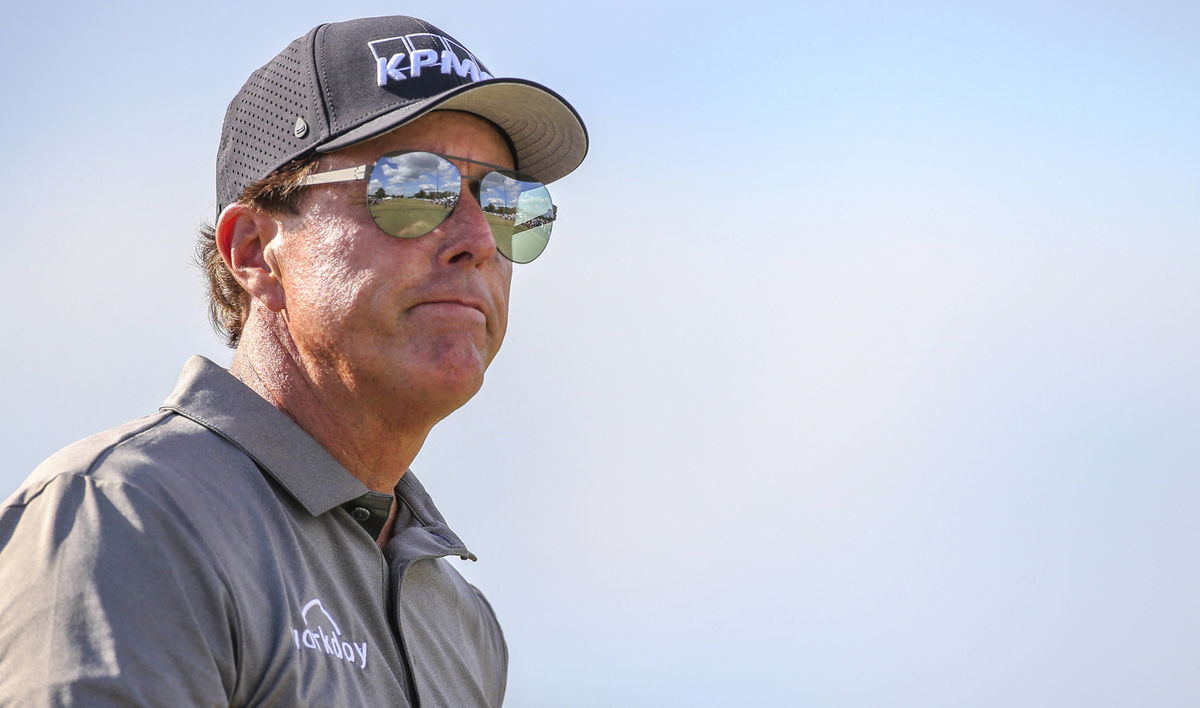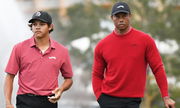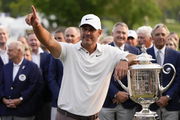

The U.S. Open is golf’s toughest test, and in 2025, it returns to one of its most legendary venues. Oakmont Country Club in Pennsylvania. The course is hosting the 125th edition of the championship, marking the record 10th time. The field of 156 players is stacked with the world’s best: current World No. 1 Scottie Scheffler leads the charge, joined by major winners like Jon Rahm, Rory McIlroy, Brooks Koepka, and defending champion Bryson DeChambeau. But beyond the birdies and bogeys, one tradition sets the U.S. Open apart: its emotional final round, always played on Father’s Day.
Watch What’s Trending Now!
Top Stories
Brandel Chamblee Calls Out Special Treatment of Jordan Spieth & Rickie Fowler During PGA Tour Events

Charlie Woods Matches 34-Year-Old Tiger Woods Record Despite Turbulent Year

Amanda Balionis Makes Personal Admission as Her Golf Initiative Nears 5-Year Milestone

LIV Golf Signs a Deal With PGA Tour’s 20-Year-Long Partner in Another Shocking Move

Tiger Woods’ Treatment of Caddies Set Him Apart from PGA Tour Rivals, Confesses Steve Williams

A tradition rooted in emotion: The U.S. Open and Father’s Day
Since 1965, the U.S. Open has carried a powerful tradition: concluding on the third Sunday in June—Father’s Day. While it may seem coincidental, this alignment is no accident. The USGA deliberately schedules its championship to finish on Father’s Day weekend, adding emotional weight to an already pressure-packed Sunday.
ADVERTISEMENT
This isn’t just about scheduling. Golf is a generational sport, often introduced from father to child. The USGA has long embraced this cultural link, promoting the Father’s Day final round as a celebration of family bonds through the lens of elite competition. It’s one of the few major sporting events intentionally designed to culminate on a holiday that honors the father figures who so often spark a lifelong love for the game. The significance isn’t lost on players either.
Whether it’s a father watching his son win a national title or a champion embracing his children on the 18th green, Sunday at the U.S. Open is layered with moments that extend far beyond the scorecard. Even caddies have been swapped out late in the round just so dads can walk the final hole beside their sons—something that’s become a light-hearted and heartwarming gesture over the years.
After a rare detour in 2020 due to COVID, the U.S. Open’s Father’s Day finish returned in full swing and is here to stay. And in 2025, as always, the final putt will drop on that Sunday—June 15—bringing with it more than just a trophy, but stories and emotions that live on for a lifetime.
ADVERTISEMENT
Let’s look at some heartwarming Father’s Day moments of the past.
ADVERTISEMENT
Unforgettable Father’s Day finales
Over the years, the U.S. Open has produced unforgettable Father’s Day moments, become synonymous with emotion. This annual coincidence has produced some of golf’s most touching and iconic moments—where triumph, legacy, and love intersect in unforgettable ways.
Few finishes compare to Payne Stewart’s 1999 win at Pinehurst, where he drained a dramatic 15-foot par putt on the final hole to defeat Phil Mickelson. In a now-iconic gesture, Stewart embraced Mickelson and wished him well on becoming a father, saying, “There’s nothing like being a father.” Months later, Stewart tragically passed away in a plane crash, elevating his Father’s Day victory into the realm of legend.
In 2003, Jim Furyk’s win at Olympia Fields turned deeply emotional when he scooped up his daughter, Caleigh, in front of the gallery on the 18th green—a celebration of family just as much as it was a major victory.
ADVERTISEMENT
On this special Father's Day, we remember a sentimental moment in golf history that happened 25 years ago. Payne Stewart's heartfelt victory at the 1999 U.S. Open and his touching words to Phil Mickelson about fatherhood reminds us of the importance of family and cherished mem… pic.twitter.com/BYEGkqs89h
— DEI SYSTEMS (@DEI_SYSTEMS_GO) June 16, 2024
In 2013, Justin Rose’s win at Merion became a personal tribute. With his late father on his mind, Rose looked skyward as he hoisted the trophy, later saying he felt spiritually connected to him in that moment. The tradition has also extended beyond the winners. That same year, Tom Watson walked the course with his son, Michael, who caddied for him in what was his final U.S. Open appearance. The symbolism was powerful—Michael had been in utero when Watson won the 1983 U.S. Open at Pebble Beach.
In 2019, Gary Woodland’s breakthrough win at Pebble Beach was punctuated by a tearful embrace with his father, Dan, who had recently survived a heart attack. That moment of family resilience resonated just as deeply as his steady performance on the course.
ADVERTISEMENT
These moments remind us that at the U.S. Open, it’s not just history being made—it’s family. And we cannot wait to feel this powerful emotion at Oakmont once again this June.
ADVERTISEMENT
ADVERTISEMENT
ADVERTISEMENT

